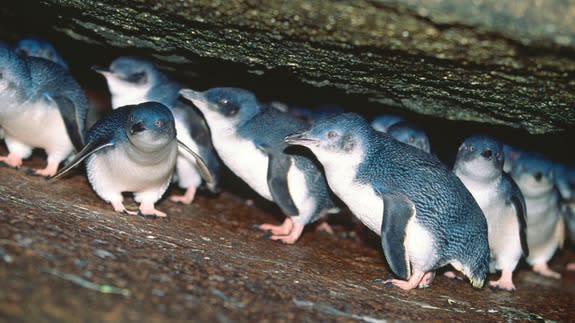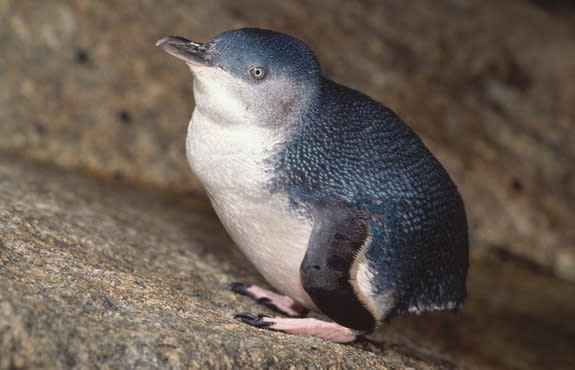DNA shows New Zealand's little penguins are actually Aussie invaders

Hundreds of years ago, some little Australian penguins waddled onto a southern New Zealand beach and decided it was so nice they just had to stick around.
The story of how these Aussie invaders managed to get a foothold across the Tasman Sea has been revealed in a new study by researchers at the University of Otago, published in the science journal Proceedings of the Royal Society B.
See also: Rare images of a remote sub-Antarctic volcano erupting
Jon Waters, the professor who led the study, told Mashable Australia the Australian little penguin, commonly known as the fairy penguin, was able to take over certain areas of New Zealand after the native penguin species was decimated by hunting around 500 years ago, leaving a gap in the ecosystem.
Travis Park, a palaeontologist and PhD student at Museum Victoria who has studied penguins told Mashable Australia the study seems consistent with the migration behaviour of Australian little penguins. "It's not unusual for them to travel that distance," he said. "There have been rare occurrences where a penguin has got lost and ended up in South America."
The human impact
The Maori people are thought to have arrived in New Zealand around 700 years ago, and Waters and his team have been examining how that event impacted local wildlife, from penguins to sea lions.
Undertaking ancient DNA testing on penguin bones found in archeological sites around the country, Stefanie Grosser, a PhD student at the university, was able to demonstrate that the Australian little penguin was not present in New Zealand until after humans arrived. "Her work showed that at the time of human arrival, there used to be an endemic species that was hunted out and replaced [by the newcomers]," Waters said.
The native little penguin went into decline in certain regions of New Zealand within about 200 to 300 years of human arrival, he posited, but its disappearance was masked by the similar-looking Australian invaders. Waters said the experience was not uncommon, noting that giant native birds, called the moa, were also thought to have gone extinct within one or two centuries of Maori arrival. "It was a bit of blitzkrieg really. Things were eaten up quickly."

Image: VWPics/Associated Press
Differences between the two species
The New Zealand and Australian little penguin are genetically very different, Waters said, despite their similar appearance. They have distinctly different calls and behaviours. "The Australian ones form these big rafts of hundreds of penguins that feed during the day and return to the coast at dusk," he explained. "The New Zealand species don't do that — they're more solitary, they don't have that big colonial behaviour."
Park suggested one potential reason why the Australian species has done so well in New Zealand, and not allowed the New Zealand little penguin to reoccupy the territory, is because they can produce two broods each year, and the New Zealand species can only produce the one.
"These ecological niches open up for whatever reason, and something else will come in and take up space," he said.
A move to sustainability
The chain of events between human arrival in previously unoccupied land and the extinction of native species has been controversial in New Zealand, but also Australia, where the debate over if, why and how much of the country's mega fauna was eradicated after the Aboriginal people arrived on the continent has gone on for decades.
According to Waters, the connection is hard to nail down in Australia as it happened around 40,000 years ago. "In New Zealand, it's very recent," he said, occurring only around 700 years ago. The extinction was also not complete — there are still New Zealand little penguin populations in some areas of the country.
He said New Zealanders, including Maori communities he has spoken with, have been very open to hearing about the scientists' findings. "People are just really interested to find the story of our wildlife is more complicated than we thought," he said.
"The fact is, this has happened all over the world, wherever humans have gone," he went on. "[In New Zealand,] there was some sort of transition in the [thinking of the Indigenous] people that allowed the animals to come back — they came to some sort of environmental realisation, because the [native] penguins came back while they were there," he said.
"They found a new way of being more sustainable."


